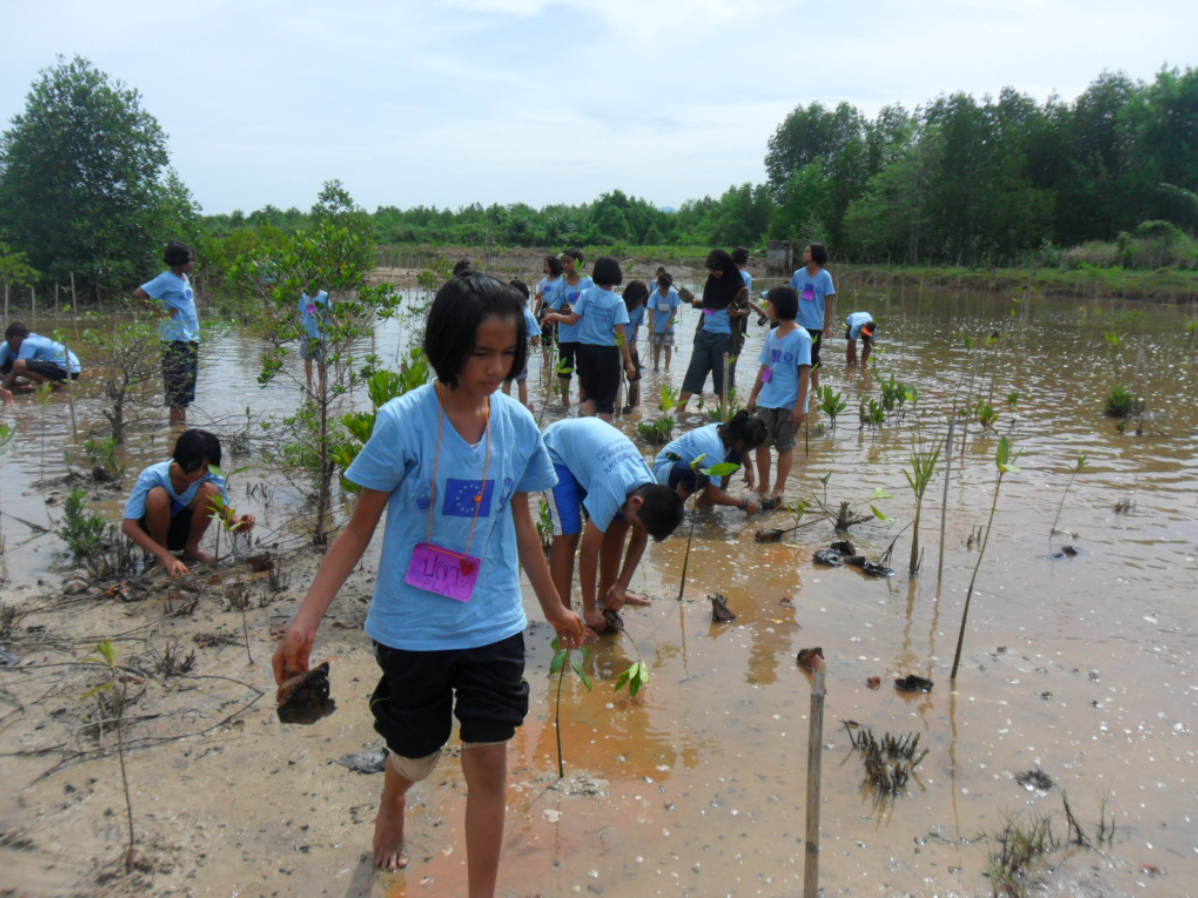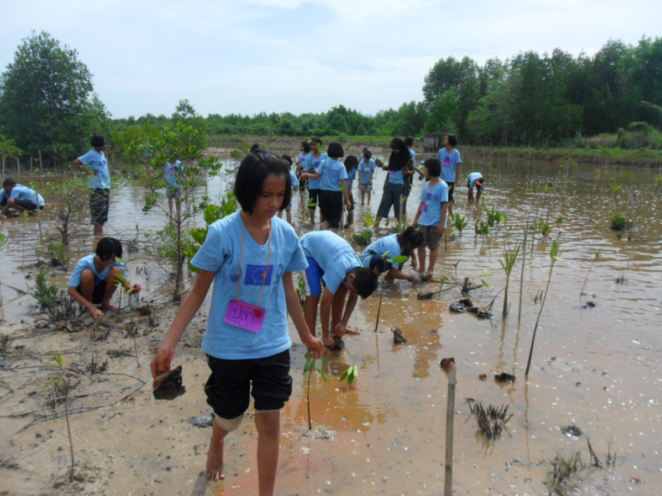Case-study /
Protecting coastal livelihoods in Thailand


School children learning about mangrove planting techniques. © Raks Thai Foundation / CARE
Protecting coastal livelihoods in Thailand
In heavily populated coastal areas of Thailand, high levels of erosion due to environmental degradation are exacerbated by climate change impacts, such as rising sea levels and increased storm surge. The resulting intrusion of saltwater into shallow freshwater areas causes significant change to ecosystems and disrupts the livelihoods of those dependent upon them. Poor people living in coastal areas are also more vulnerable to the increasingly frequent and severe weather events.
Government policy permits the deforestation of mangrove forest, but this has led to the use of mangrove wood as firewood and the expansion of tiger prawn farms. This, in turn, has reduced the populations of many marine organisms. This has a serious impact on local fisher-folk, reducing their catch and therefore impacting on their food security, as well as their livelihoods. Environmental degradation poses a critical threat to the livelihoods of the villagers, since they do not own land and so have no alternative options for income-generating activities.
In response, Raks Thai Foundation (a member of CARE International), together with CARE International Indonesia, implemented a three-year project – Building coastal resilience to reduce climate change (BCR-CC) – in south Thailand, alongside a sister project in South Sulawesi, Indonesia.
Capacity development for local civil society and government institutions
A participatory Climate Vulnerability and Capacity Analysis (CVCA) was carried out, using rural appraisal tools such as seasonal calendars and hazard mapping to better understand the impacts of climate change on the communities and their existing adaptation strategies. Based on their findings, adaptation projects were designed together with the communities and local government, and a feasibility study conducted to ensure that the proposed interventions were sustainable and equitable. Additionally, local government representatives were trained in adaptation budgeting in order to integrate good practice in adaptation into their regional development plans.
Promotion of climate-resilient livelihoods strategies
The communities decided to initiate the restoration of mangrove forest in a deserted prawn farming area. Plants and marine life were rehabilitated once the mangroves were planted and the area allowed to be naturally flooded with seawater. The crucial process was to encourage positive collaborative partnerships between community members, local non-profit organisations, local government agencies and mangrove management-related administrative offices. The cultivation of additional mangrove trees is now being considered, which will require the cooperation of all of these groups, since the water flow system will once again need to be adjusted.
Disaster risk reduction strategies to reduce the impact of hazards on vulnerable households
The community now recognises that abundant mangrove forests serve as natural barriers to prevent the erosive impacts of ocean waves, winds and storms, and facilitate safer boat landings. The rehabilitated coastal areas will serve as a source of food and natural resources for the local population in the long term, if used sustainably.
The community has now developed hands-on learning tools, and, in cooperation with Baan Klong Yang School, they have established a learning centre to pass their knowledge to young people in the community and raise their awareness of natural resource restoration and management.
Advocacy and social mobilisation to address the underlying causes of vulnerability
Students and community members participated in a community event to plant mangroves, which strengthened local ownership and created awareness of the need to protect the mangrove zone. The community and local government developed a local regulation about the use of the mangrove forest area. This regulation was presented in a village meeting to which neighbouring villages were also invited. Coastal inhabitants from nearby areas are therefore also informed about the benefits of the mangrove forest in protecting coastal livelihoods.
